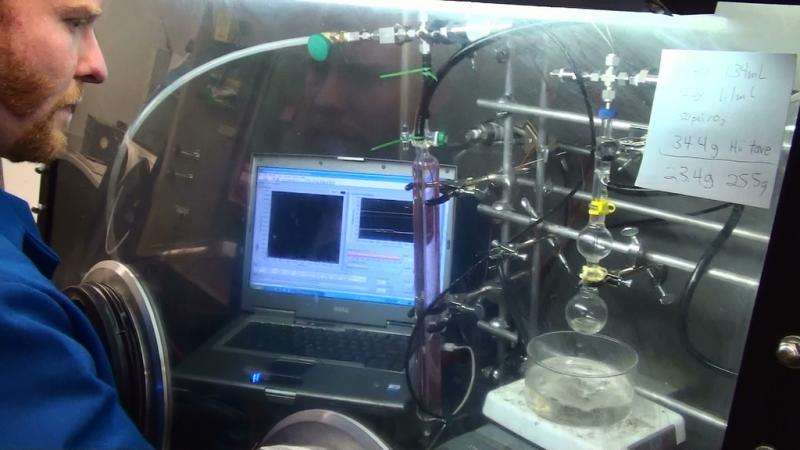Next-gen solvents capture carbon with half the energy

U.S. energy production could increase with the help of an improved carbon capture technology that use about half the energy of today's standard technologies. Emissions captured at fossil fuel power plants could in turn be used to harvest more crude by injecting it into underground oil fields.
Lower-cost carbon capture is possible with carbon capture solvents that have just a little water and some organic molecules. These are called "water-lean" solvents and are the focus of a new paper in the American Chemical Society journal Chemical Reviews. The review paper is one of a handful of articles focusing on various carbon-capture technologies in a special issue of the journal.
There are a few carbon capture plants in operation today, and all of them rely on water-based solvents that also carry nitrogen-rich compounds called amines. These standard carbon-capture solvents are skilled at capturing carbon, but require a great deal of heat to recycle the solvents, a process called regeneration. The solvents must be exposed to high temperatures to undo the bonds between solvent and carbon. Using that heat makes power plants less efficient and ups the price tag of energy generated at power plants.
Water-lean solvents were designed to make the overall carbon-capture process more energy-efficient. They can break carbon out of used solvents at lower temperatures, which means they can be regenerated with colder waste heat from power plants instead of tapping the more valuable, hot steam that plants normally use to generate electricity.
The paper's comprehensive review of existing research on these next-generation solvents found the technology pulls out enough carbon from power plant emissions to make it cost-effective and that it requires half as much energy as traditional solvents.
The paper's development was supported by DOE's Early Career Research Program, which is funding PNNL chemist David Heldebrant to study carbon capture's molecular processes and convert captured carbon into useful products such as fuels.
More information: David J. Heldebrant et al. Water-Lean Solvents for Post-Combustion COCapture: Fundamentals, Uncertainties, Opportunities, and Outlook, Chemical Reviews (2017). DOI: 10.1021/acs.chemrev.6b00768
Journal information: Chemical Reviews
Provided by Pacific Northwest National Laboratory





















